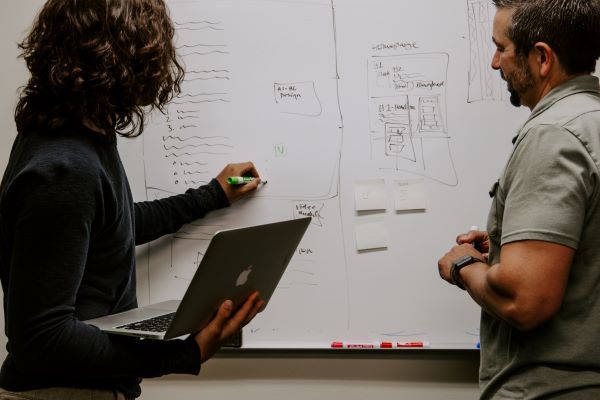Strategic Planning – Large Business Unit – Inclusive and Collaborative Process
Case Studies > Group Facilitation > Strategic Planning – Large Business Unit – Inclusive and Collaborative Process
The Client
A Senior Executive seeking to develop a five-year strategic plan for a large business unit.
The Brief
The Senior Executive (appointed recently to the role) sought a strategic plan to be collaboratively developed with the executive team and using an inclusive approach involving a cross section of staff beyond the executive.
Strategic planning offered an important opportunity to foster cultural change. This included developing executives to work cooperatively together and taking greater ownership of whole of business outcomes.
Our Response
HR Advantage designed and facilitated the planning process, providing key concepts, a framework, advising and coaching executives, while ensuring agency and ownership for decision making and the development of the plan was held with the executive team.
The business did not have a strong history of strategic planning and most previous planning had focused on complying with externally driven corporate requirements and operational planning at Directorate level. There had been limited focus on whole of business planning and strategy.
It was important that significant operational pressures were considered and acknowledged while also fostering a broader strategic focus.
We facilitated a series of meetings and workshops held over five months. The executive team was engaged early in confirming the objectives of the planning and establishing key principles to underpin a successful planning process. These focused on achieving quality leadership dialogue and alignment to ensure a meaningful strategic plan was developed which would help leaders in decision making and guiding business directions.
We designed and ran a series of offsite workshops held for Directorates and at a whole of business level. Along with executives these involved a broad cross section of staff from all business areas.
These workshops ensured diverse inputs from different staff levels, skills, experience and perspectives. External information was included, and the Chief Executive provided direct input at all Directorate workshops - challenging, extending and encouraging participants thinking. Combined with the workshops we facilitated various executive team meetings.
The overall process included:
- Providing key concepts and a common planning framework
- Undertaking a current state assessment with a stocktake of key work commitments and priorities
- Defining the future focus, direction, purpose and vision for the business
- Identifying important operating values and principles to achieve the purpose and vision
- Exploring how the alignment of the operations of the business related to its wider operating environment, considering multiple stakeholders, partners, employees, corporate requirements
- Exploration of interdependencies within and across the business to achieve outcomes
- Assessment and exploration of how to build on what was working well, and how to develop and implement changes to achieve the outcomes for the business
- The development of objectives, strategies, key actions and performance indicators
- These were incorporated into a strategic plan which the executive took forward for detailed staff consultation before finalising.
The Results
Previous planning efforts had tended to result in a conglomeration of various activities rather than deeply considering the strategic vision, objectives and strategies for the business.
Client feedback was that this group had not engaged in the level or depth of planning and related discussion and had not operated as collaboratively at a whole of business level before. While relationships within the group had been generally positive, most previous collaboration had focused at an issue or initiative level, rather than whole of business outcomes.
Importantly the plan was seen as highly relevant and was robust, informed by the breadth and depth of inputs from a large number of staff, and consideration given to a multitude of external business drivers and stakeholder needs.
The executive team developed its first five-year strategic plan having undertaken a highly collaborative and inclusive process. The plan encompassed and was relevant to the whole of the business and was owned by the executive.

